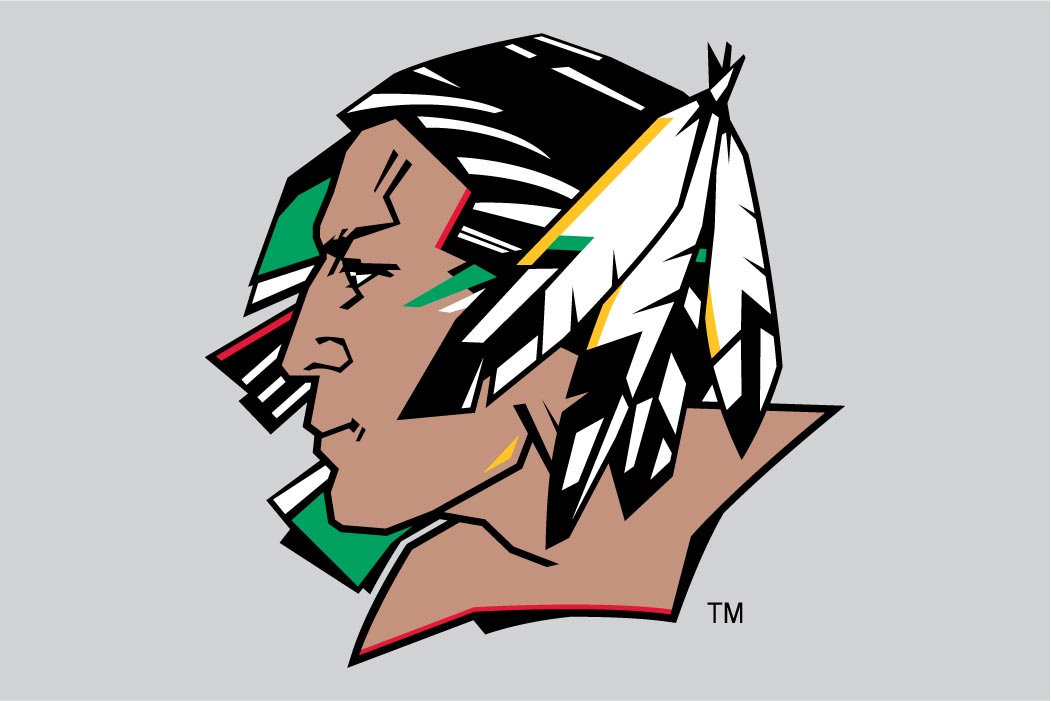The University of North Dakota (UND) finally has a new mascot: the Fighting Hawks. The school had been mascot-less for three years, after a series of legal battles forced it to retire its old mascot, the Fighting Sioux (pictured above). As such, it’s part of a growing movement to remove American Indian mascots—an issue most publicized by the continued debate over the mascot of the Washington Redskins.
Dakota certainly isn’t the only Midwestern college to have run into this issue. As far back as 1967, Minnesota’s Mankato State University began a decade-long, and ultimately successful, debate over whether to change its mascot to Mavericks from the Indians, placing Minnesota squarely at the front of this type of activism, writes researcher Sudie Hoffman. The next glimmerings of protest came in 1986, when students at St. Cloud State University (SCSU) wrote to the school board of Sauk Rapids School District with similar concerns over its mascot, also the Indians.
Though St. Cloud State University itself never had an American Indian mascot, the campus was host to strong activism against these mascots—and against the University of North Dakota’s use—beginning in the 1990s with the establishment of a new American Indian Center at the school. The new center made American Indian visibility a key point on campus, with students pressuring the campus newspaper to support measures against use of these mascots. They even produced the first American Indian college radio station.
Students spread the word with a combination of protests, educational teach-ins, and once, boycotts of basketball and hockey games between SCSU and UND. Within weeks of the hockey game protest, SCSU administration approved a policy stating that the university supported its students’ right to express their opinions of UND’s symbols.
In 2001, then-SCSU president Roy Saigo enlisted the help of the Minnesota State Colleges and Universities (MSCU) to adopt a policy prohibiting members of the network from using American Indian symbols. The policy passed the following February. Though it could not influence UND—which by definition was not part of the MSCU—it was a symbolic victory years in the making.
The second part of Saigo’s plan was more important, though less successful. It proposed that these mascots be challenged at the national level by the NCAA, but this was soundly rejected. Though the NCAA conducted a year-long study on the issue, its only recommendations were that institutions self-monitor themselves. Today, the controversy continues in sports, as the more visible teams—such as the Cleveland Indians and the Atlanta Braves—are targeted by activists with the same qualms.







